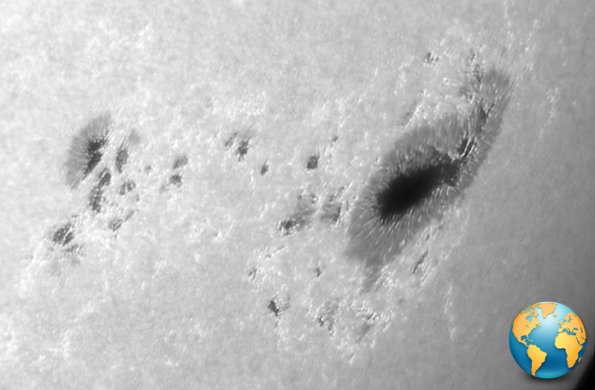Home | Gallery of astronomical pictures | SUN White-Light | Sunspot Active Region_12085.(2)
Sunspot AR 12085, with faculae, of 13 june 2014, (monochrome version).
(Freely adapted from Wikipedia & Internet)
Facula
White light plage. Bright region of the photosphere seen in white light, seldom visible except near the solar limb. Corresponds with concentrated magnetic fields that may presage sunspot formation.
A facula (plural: faculae), Latin for "little torch", is literally a "bright spot." The term has several common technical uses. It is used in planetary nomenclature for naming certain surface features of planets and moons, and is also a type of surface phenomenon on the Sun. In addition, a bright region in the projected field of a light source is sometimes referred to as a facula, and photographers often use the term to describe bright, typically circular features in photographs that correspond to light sources or bright reflections in a defocused image.
Solar faculae are bright spots that form in the canyons between solar granules, short-lived convection cells several thousand kilometers across that constantly form and dissipate over timescales of several minutes. Faculae are produced by concentrations of magnetic field lines. Strong concentrations of faculae appear in solar activity, with or without sunspots. The faculae and the sunspots contribute noticeably to variations in the "solar constant". The chromospheric counterpart of a facular region is called a plage.
Not yet rated

